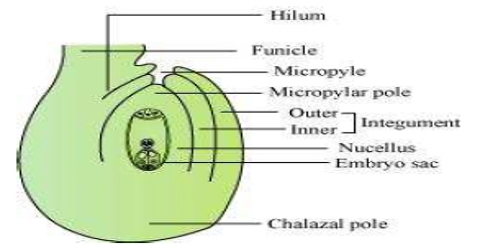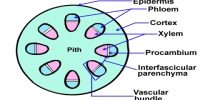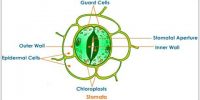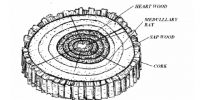Ovule: The round shaped microscopic organs present in the placenta of an ovary which are turned to seeds after being fertilized are called ovules.
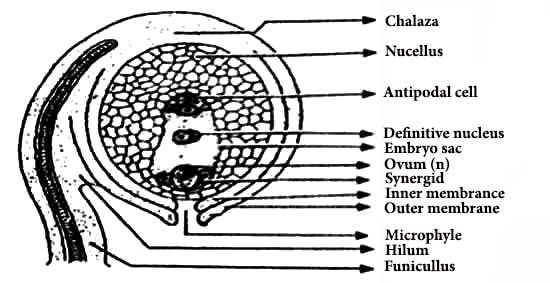
Fig: Structure of an ovule.
Structure of ovule: A typical ovule is composed of the following organs.
(i) Funiculus: The connecting slender stalk between ovule and placental is known as funiculus.
(ii) Hilum: The attaching point between an ovule and a funiculus is called hilum.
(iii) Nucellus: The main body tissue of an ovule is called nucellus.
(iv) Integument: One layered two outer covering- surrounding the nucellus is called Integument.
(v) Micropyle: The exposed area of the anterior part of an ovule is called Micropyle.
(vi) Chalaza: The area of ovule where nucellus and integument are fused is called Chalaza.
(vii) Embryo sac: The oval-shaped sac which is situated just above the micropyle, consisting of eight haploid nuclei is called embryo sac.
Embryo sac consists of the following parts:
- Egg apparatus: The egg apparatus consists of an egg (n) containing a big nucleus and two sinergids lying on its two sides towards the micropyler end.
- Antipodal cells: There are three cells lying towards the opposite end of micropyle which are combinedly known as antipodal cells.
- Definitive nucleus: Two nuclei, situated at the middle of the embryo sac is known as definitive nucleus. It bears the diploid chromosome.
